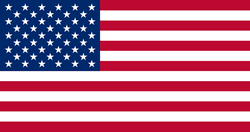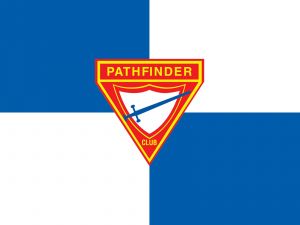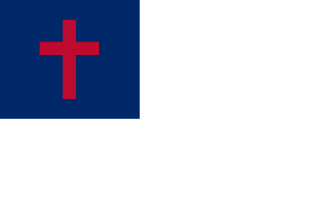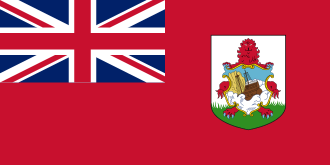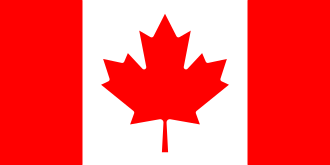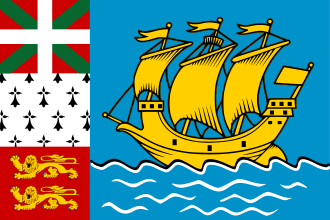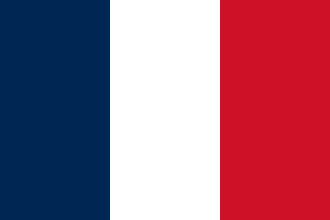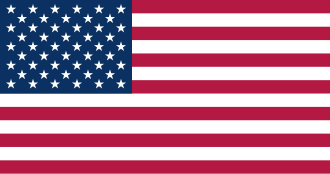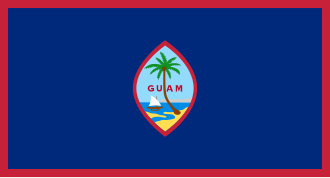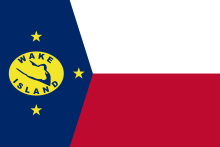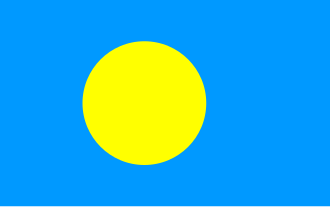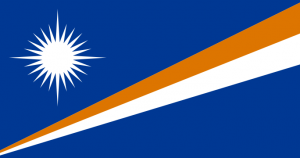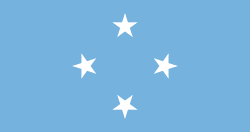Difference between revisions of "AY Honors/Flags/Answer Key"
m (moved Adventist Youth Honors Answer Book/Outreach/Flags to AY Honor Flags: Moved to Outreach until NAD/GC hammer out Heritage Category) |
JadeDragon (talk | contribs) m (moved AY Honor Flags to Adventist Youth Honors Answer Book/Outreach/Flags: Not outreach, likely heritage, move to other for now) |
Revision as of 12:38, 27 April 2014
Template:AY patch unavailable Template:Honor header
Note
This honor has been approved by the NAD, but belongs to a category which has not yet been officially adopted. As such, no Honor token is yet available.
1. Describe what a flag is and list three uses of flags.
A flag is a piece of material with a distinctive design that is usually rectangular and used as a symbol, as a signaling device, or decoration attached on one edge to a pole or rope.
2. Know and locate the following parts of a flag:
Note: These definitions were taken from the following resources. &&
- a. Canton
Where the feature is used, the upper area of the flag by the flagstaff, or a flag with a design featured in the canton area. The blue area with stars on the US flag is the canton, but there is no canton on the Canadian flag.
- b. Field
The field is the background color of the flag, the area between the hoist and fly ends.
- c. Finial
Staff ornament found on a flagpole, whether on a fixed pole - such as at a school - or a pole designed to carry the flag in a parade. According to the Unites States Flag Code there is no guideline regarding finials:
- The Flag Code is silent as to ornaments (finials) for flagstaffs. We know of no law or regulation which restricts the use of a finial on the staff. The eagle finial is used not only by the President, the Vice-President, and many other federal agencies, but also by many civilian organizations and private citizens. The selection of the type finial used is a matter of preference of the individual or organization. Most commonly, an Eagle is used as the finial on the American flag.&
- d. Flagstaff
In general when a flag is flown outdoors it flies from a flagpole, mast or flagstaff.
- e. Fly
The fly is the part of the flag that is the farthest from the flagstaff.
- f. Fly end
The fly end is the part of the flag that flaps in the wind and sometimes becomes frayed.
- g. Halyard
A halyard is a rope or cable used to raise and lower a flag on a flagpole.
- h. Hoist side
The part of the flag that is nearest the flagstaff. Also hoist is used to describe the height of flag while flying and the act of raising a flag.
- i. Truck
The ball on top of the flagpole.
3. Know three important guidelines for the care and handling of your national flag.
While some specific handing instructions differ somewhat between countries, the following is nearly universally true:
- The national flag should be flown above any other flags
- The national flag should never touch the ground
- Respect should be shown the flag - including saluting the flag
- Tattered flags should not be displayed or flown but should be privately disposed of, preferably by burning
4. Learn how to and practice folding your national flag.
The procedure for folding the national flag varies by country. if your country and flag ar e not listed here, please feel free to research it and add it to the list.
Bermuda
Flag protocol for Bermuda should follow that of the United Kingdom, of which Bermuda is a British Overseas Teeritory.
Canada
There is no method of folding prescribed when folding the flag for everyday use. There is, however, a method similar in nature to that used in the US when folding a flag for ceremonial purposes such as a funeral. More information can be found at the Canadian directorate of History and Heritage page.
United Kingdom
There are two methods generally used in folding the Union Jack. The first is called Breaking and is generally used during flag raising.. The Union Jack is folded in half lengthwise (along the central red stripe of the St. George's Cross, and then in half again, bringing the fold to meet the edge of the flag. The last 1/3 of the flag is folded inwards (towards the heading) and then the remainder is rolled towards the heading. The flag is then secured with a piece of light cotton or string. When hoisted, a sharp tug of the halyard will break the string and allow the flag to fly free.
The other method is generally used when the flag is used as a pall over a coffin. The folding method is similar to that used by the United States. More information can be found here: Flying Flags in the United Kingdom Other than these, there are no prescribed methods of folding the Union Jack. It is to be hoisted and lowered with respect, and care taken that no part of it touches the ground.
United States
Title 4 Chapter 1 of the United States Code known as The United States Flag Code, first adopted in 1924 and amended through the present, prescribes flag etiquette for a variety of circumstances ensuring that our national symbol is treated properly.
- To begin folding the flag, have two people hold it between them - one on either end - at waist height.
- The first fold should bring the bottom striped edge up to meet the top edge (which features the blue field of the canton). #The next fold should bring the folded edge to meet the open edge, leaving the blue field on the outside.
- Once that is completed, the person on the fly end (with the stripes) should begin folding the striped edge of the flag up to meet the open edge. The stripes on the folded portion wil now be perpendicular (At a right-angle) to the rest of the stripes.
- Make another triangular fold, bringing the edge of the triangle up to meet the flag's open edge (the stripes will now be parallel)
- Continue folding in this manner, keeping the folds even and tight. If done correctly, the point of the fold just before the blue field should just touch the edge of the blue.
- Fold again, until there is a small area of the blue field left - about the amount needed to make one more fold. Fold the corner of the hoist end so that the fold goes the opposite direction of the folded fly end. tuck the folded hoist end into the flag, inserting it into the open part of the folded flag. Ensure it is well tucked in, and the folds are tight and neat. Inspect the folded flag, ensuring that no red is showing, only the blue field with stars. (See also U.S. Flag.org for a good explanation of proper folding).
5. Practice proper etiquette when saluting your national flag.
- a. In uniform while standing.
- b. In uniform while marching.
- c. In Field uniform.
- d. While wearing headgear.
- e. When not in uniform.
6. Draw the Pathfinder flag with emblem.
- a. Learn who designed the Pathfinder Flag and who sewed the first Pathfinder flag.
Helen Hobbs made the Pathfinder flag. Pathfinder Club emblem designed by John H. Hancock.
- b. Color your drawing with appropriate colors.
See the flag beside this answer for guidance.
- c. Know the meaning of the Pathfinder emblem.
Meaning of the Pathfinder Club Emblem&
Red (Sacrifice) Reminds us of Christ. "For God so loved the world, that he gave his only begotten Son, that whosoever believeth in him should not perish, but have everlasting life.” (John 3:16) "Present your bodies a living sacrifice, holy, acceptable unto God" (Rom. 12: 1).
Three sides Completeness of the Trinity -- Father, Son, Holy Spirit. Tripod of education: Mental Crafts and Honors Physical Campouts, work bee, health focus Spiritual Outreach and personal spiritual development.
Gold (Excellence) "I counsel thee to buy of me gold tried in the fire, that thou mayest be rich" (Rev. 3:18). Standard of measurement. The Pathfinder Club has high standards to help build strong character for the kingdom of heaven.
Shield (Protection) In the Scripture God is often called the shield of His people.(Protection) "Fear not ... I am thy shield" (Gen. 15:1) "Above all, taking the shield of faith, wherewith ye shall be able to quench all the fiery darts of the wicked." (Eph. 6:16)
White (Purity) "He that overcometh, the same shall be clothed in white raiment" (Rev. 3:5). We desire to have the purity and righteousness of Christ's life in our lives.
Blue (Loyalty) It is the purpose of the Pathfinder Club to help teach us to be loyal to: Our God in heaven. Our parents. Our church. Loyalty is defined as a reflection of the character of our True Master Guide.
Sword (Bible) The sword is used in warfare. A battle is always won by offense. We are in a battle against sin, and our weapon is the Word of God. The sword of the Spirit is the Word of God. (see Eph. 6:17)
Inverted Triangle The inverted order of importance Jesus taught which is contrary to that taught by the world. Sacrificing of one's self by placing the needs of others ahead of our own.
Pathfinder Club The Pathfinder Club is one of the organizations of the world youth ministry of the Seventh-day Adventist Church.
7. Draw the Christian Flag.
The simplicity of the Christian flag makes this part easy.
- a. Explain what the colors represent.
The flag has a white field, with a red Latin cross inside a blue canton. The shade of red on the cross symbolizes the blood Jesus shed on Calvary. The blue represents the waters of baptism as well as the faithfulness of Jesus. The white represents Jesus' purity. In conventional vexillology, a white flag is linked to surrender, a reference to the Biblical description of Jesus' non-violence and surrender. The dimensions of the flag and canton have no official specifications.
- b. Know what the emblem represents.
The cross represents Christ's death so that we can live forever. The cross is an instantly recognizable symbol of Christianity.
8. Learn how to and practice placing flags (National/State/Province, Christian, AY, Pathfinder) for each of the following occasions:
- a. Campsite when camping.
- b. Platform for Special Ceremonies.
- c. Church Service for Induction, Investiture, and/or Pathfinder Sabbath.
- d. Fair Booth.
- e. Pathfinder/AY Club meeting.
- Bermuda
The Flag of Bermuda was adopted on October 4, 1910 with a revision in 1999. The elements are:
British Red Ensign: The flag is the only British territory to use a red ensign form on land (usual the red ensigns are for ships). The other British overseas territories use a version of the blue ensign for general use ashore. Bermuda's use of a red ensign on land is in keeping with Canada (pre-1965) and the Union of South Africa (pre 1928), both of which used red ensigns ashore as local flags in the early part of the 20th century.
Union Flag/Union Jack: in the upper left corner (the canton) signifying the ties to the United Kingdom and also symbolizes oneness and unification. You can explore the meaning of the Union Jack as well.
Coat of arms of Bermuda: centered on the fly half, the coat of arms is a red lion (symbol of England) that is holding a shield that depicts a sinking Sea Venture of Bermuda ship in the center. The flagship of the Virginia Company, the Sea Venture was intentionally crashed into the reefs of Bermuda by its Admiral, George Sommers, in 1609 to avoid a fierce storm. Because of this daring act, 100% of the crew survived. The survivors chose to stay in the island to become the first settlers of Bermuda.
In 1999, the scroll on the coat of arms was updated with the inscription – “ Quo Fata Ferunt” which means “Whither the Fates Carry [Us]”.
- Canada
Canadian Heritage is responsible for flag promotion and protocol. Explore their page here for everything you need to know about the Maple Leaf.
- United Kingdom
All UK specific answers and other general info. http://www.flaginstitute.org/pdfs/Flying_Flags_in_the_United_Kingdom.pdf
- United States
The red and white stripes represent the original 13 colonies. The (current) 50 stars represent the current 50 states, the number being increased as states were added.
- Other Countries
If your country is not listed here, please research and add the info here. The history of national flags is easy to find online.
10. Identify the flags of your Division and know what countries they represent.
The Adventist Church has divided the world into 13 administrative districts it calls Divisions.
North American Division
The North American Division comprises 10 countries and territories:
Bermuda
The current Bermuda flag was adopted in the 1910. As a British overseas territory, Bermuda's flag features the United Kingdom flag upper left. The green and white badge displays a red lion holding a shield that symbolizes the sinking of the Sea Venture about one mile off the coastline of Bermuda in the summer of 1609 by the founders of Bermuda. The ship was caught in a hurricane, so the captain intentionally struck a reef near the island saving all lives on board. &
Canada
The flag of Canada was officially adopted on February 15, 1965. The Canadian Red Ensign, bearing the Union Jack and the shield of the royal arms of Canada, was lowered and then, on the stroke of noon, the new maple leaf flag was raised. The crowd sang the national anthem O Canada, followed by the royal anthem, God Save the Queen.
The following words, spoken on that momentous day by the Honourable Maurice Bourget, Speaker of the Senate, added further symbolic meaning to the flag: "The flag is the symbol of the nation's unity, for it, beyond any doubt, represents all the citizens of Canada without distinction of race, language, belief or opinion." The stylish red maple leaf has been the national symbol of Canada for over 150 years. Red and white are the official colors of Canada, proclaimed by King George V in 1921.&
St.Pierre and Miquelon (French islands close to Newfoundland with no Adventist presence)
Saint Pierre and Miquelon are a self-governing territory of France. The stylish flag features a red sailing ship on a blue field. The three-part verticle band on the left side displays the heraldic arms of local settlements established by French colonists from the Basque Country (top), Brittany (center), and Normandy (bottom).&
The Flag of France also flies in Saint Pierre and Miquelon.
Blue and red are the traditional colours of Paris, used on the city's coat of arms. Blue is identified with Saint Martin, red with Saint Denis. At the storming of the Bastille in 1789, the Paris militia wore blue and red cockades on their hats. White had long featured prominently on French flags and is described as the "ancient French colour" by Lafayette.[1] White was added to the "revolutionary" colors of the militia cockade to "nationalise" the design, thus creating the tricolour cockade.[1] Although Lafayette identified the white stripe with the nation, other accounts identify it with the monarchy.[3] Lafayette denied that the flag contains any reference to the red-and-white livery of the Duc d'Orléans. Despite this, Orléanists adopted the tricolour as their own.
Blue and red are associated with the Virgin Mary the patron saint of France, and were the colours of Charlemagne's ensign and war cry, "Montjoie". The colours of the French flag may also represent the three main estates of the Ancien Régime (the clergy: white, the nobility: red and the bourgeoisie: blue). Blue, as the symbol of class, comes first and red, representing the nobility, comes last. Both extreme colours are situated on each side of white referring to a superior order.[4] Lafayette's tricolour cockade was adopted in July 1789, a moment of national unity that soon faded. Royalists began wearing white cockades and flying white flags, while the Jacobins, and later the Socialists, flew the red flag. The tricolour, which combines royalist white with republican red, came to be seen as a symbol of moderation and of a nationalism that transcended factionalism.
The three colours are occasionally taken to represent the three elements of the revolutionary motto, liberté (freedom: blue), égalité (equality: white), fraternité (brotherhood: red); this symbolism was referenced in Krzysztof Kieślowski's three colours film trilogy, for example.
United States (excluding Puerto Rico and the US Virgin Islands which are in IAD)
The flag of the United States features thirteen equal horizontal stripes of red (top and bottom) alternating with white; there is a blue rectangle in the upper hoist-side corner bearing 50 small, white, five-pointed stars arranged in nine offset horizontal rows of six stars (top and bottom) alternating with rows of five stars; the 50 stars represent the 50 states; the 13 stripes the 13 original colonies. The flag is known as Old Glory, and no one knows for certain who designed it. Most historians believe that U.S. Congressman, Francis Hopkinson was the original designer, while a few still believe that Betsy Ross, a Philadelphia seamstress, made the first one.&
US Pacific territories of Guam, Northern Marianas, and Wake Island
The flag of Guam was designed on the island, and officially adopted in 1917. As a territory of the United States it features traditional U.S. colors, along with a symbolic seal that includes a swaying palm tree, sand, and the waters of the Pacific Ocean.&
The flag of Northern Mariana Islands was officially adopted in 1972. The islands are a territory of the United States, symbolized by the centered white star. Under that star, a gray latte stone is representative of a traditional foundation stone, one used in building. The surrounding wreath is comprised of colorful local flowers.&
The Wake Island flag includes the colors of the US flag, a maps of the 3 islands that make up the territory and three white stars representing those islands. The flag clearly conveys the connection to the United States.
Palau
The flag of Palau was adopted on 1 January 1981, when the island group separated from the United Nations Trust Territory and became a republic. Previously, the flag of the Trust Territory of the Pacific Islands was flown jointly with the United Nations and American flags. Like some other flags of several other Pacific island groups, blue is the colour used to represent the ocean and the nation's place within it.
The flag's very simple design belies the depth of meaning attributed to it. The explanation for the choice of colours is rooted in the history and customs of the Palauan people. The bright blue of the field, which might be assumed to be symbolic of the Pacific Ocean, is in fact a representation of the transition from foreign domination to self-government. The golden disk, which sits slightly off centre toward the hoist, represents the full moon. The Palauans consider the full moon to be the optimum time for human activity. At this time of the month, celebrations, fishing, sowing, harvesting, tree-felling, and the carving of traditional canoes are carried out. The moon is a symbol of peace, love, and tranquility.
The Marshall Islands
The flag of the Marshall Islands was adopted upon the start of self-governance, May 1, 1979. The flag was designed by Emlain Kabua, who served as the first First Lady of the republic.
The Marshall Islands were part of the Trust Territory of the Pacific Islands administered by the United States, from which the Marshall Islands, Palau, and the Federated States of Micronesia split. In common with other island nations in the region, this flag features the symbolic representation of the islands' place within the ocean. The rising diagonal band represents the equator, the star above representing this Northern Hemisphere archipelago. The white and orange portions of the band represent, respectively, the Ratak Chain ("sunrise") and the Ralik Chain ("sunset"), as well as symbolizing peace and courage. The star's 24 points represent the number of electoral districts, while the four elongated points represent the principal cultural centers of Majuro, Jaluit, Wotje and Ebeye.
The Federated States of Micronesia
The flag of the Federated States of Micronesia (FSM) was adopted on 10 November 1979. The blue field represents the Pacific Ocean, while the four stars represent the states in the federation: Chuuk, Pohnpei, Kosrae and Yap, with the stars arranged like the points of the compass.
The flag brings together element of previous flags flown over the islands. The Trust Territory of the Pacific Islands used a six star flag however the current flag excludes the stars representing Palau, the Marshall Islands and Northern Mariana, which chose not to participate in the Federation, and adds back a star because the Trust Territory flag combined two islands in the group in one of the six stars. The blue and white colors are those of the UN flag which flew over the islands from 1947 - 1965. The idea of stars representing states echos the US flag, which also flew over the islands for many years.
(these last three countries are in free association with the United States and with the three US Pacific territories form the Guam-Micronesia Mission, which became part of the North American Division in 2011.)
Other Parts of the World
You can see a list of countries currently associated with the other Divisions and attached regions here. http://www.adventist.org/world-church/world-divisions/index.html
References
- ↑ http://www.netstate.com/states/symb/flags/flag_terminology.htm
- ↑ http://www.enchantedlearning.com/geography/flags/glossary.shtml
- ↑ http://www.senate.gov/reference/resources/pdf/RL30243.pdf
- ↑ http://gcy.bigfoottech.com/Ministries/Pathfinders/MeaningPathfinderClubEmblem/tabid/208/Default.aspx
- ↑ http://www.worldatlas.com/webimage/flags/countrys/europe/bermuda.htm
- ↑ http://www.worldatlas.com/webimage/flags/countrys/namerica/canada/caflag.htm
- ↑ http://www.worldatlas.com/webimage/flags/countrys/assorted/stpierre.htm
- ↑ http://www.worldatlas.com/webimage/countrys/namerica/usstates/usflags.htm
- ↑ http://www.worldatlas.com/webimage/flags/countrys/pacific/guam.htm
- ↑ http://www.worldatlas.com/webimage/flags/countrys/pacific/marianas.htm
- Wikipedia - Flags
- http://www.flaginstitute.org/pdfs/Flying_Flags_in_the_United_Kingdom.pdf. All UK specific answers here and other general info.
